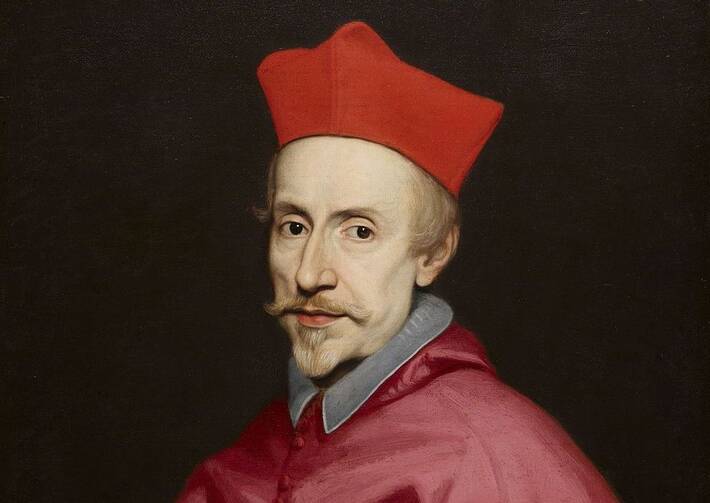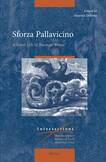Review: A Jesuit cardinal in Roman high society
Cardinal Sforza Pallavicino, S.J., was a church historian so charismatic that he was deemed la fenice degl’ingegni (a phoenix among the ingenious ones) by Roman high society in the 1620s. The influential German thinker Gottfried Wilhelm Leibniz, who agreed with Pallavicino that theology and philosophy were one and the same thing, expressed regret that he had never had the pleasure of meeting the cardinal. Those who did, like his friend the sculptor Gian Lorenzo Bernini, were permanently impressed by Pallavicino’s tolerance. The cardinal, as the historian of philosophy Sven Knebel notes in his chapter “Pallavicino the Optimist” in Sforza Pallavicino: A Jesuit Life in Baroque Rome, edited by Maarten Delbeke, had an “open mind and cared little for the uniformity of doctrine.”
This intellectual flexibility combined with intense faith was unusual in his era. An early supporter of the astronomer Galileo Galilei, who would eventually be tried by the Inquisition, Pallavicino remained devoted to science. As he wrote to one friend, his passion for studying specimens under a microscope inspired him at least once to put the eucharistic host under the lens to examine it, in an episode alluded to by Knebel. Pallavicino did not report what, if anything, he discovered as a result, but surely the experience reinforced his notion that religion and science were symbiotic. For an Italian ecclesiastic in the 1600s, this was a rare perception indeed. Pallavicino would be praised by later Italian philosophers from Giambattista Vico to Benedetto Croce, as the historian Stefan Bauer details in his chapter “Writing the History of the Council of Trent.”
Cardinal Pallavicino's History of the Council of Trent remained the authoritative text on the subject into the 20th century.
His stature within the church was in good part due to being assigned the essential task of writing a definitive history of the Council of Trent, held in the mid-16th century in northern Italy. Prompted by the Protestant Reformation, the council condemned what it defined as heresies committed by Protestants and issued statements about church doctrine on Scripture, the biblical canon and other essential related subjects.
Pallavicino succeeded so well that his History of the Council of Trent remained the authoritative text on the subject into the 20th century. Translated into Latin, French, Spanish and German, the History was praised by the 19th-century historian Leopold von Ranke as “scrupulously exact” in carefully consulting documents “in their entirety.” Bauer notes, however, that Ranke also underlined the methodological “limits” in Sforza’s attempt to provide a point-by-point refutation of a previous account of the council instead of “creating his own structure” of independent historical analysis.
As master of the Jesuit novitiate on Quirinal Hill, the highest of the seven hills of Rome, Pallavicino helped plan the Church of Saint Andrew on the Quirinal. Well known to operagoers as the setting for Act I of Puccini’s melodramatic “Tosca,” the church became the site of an ornate tomb at the entrance for Pallavicino, who died in 1667.
Pallavicino’s theological expertise was also solicited for such landmarks as the ceiling of the Barberini Palace, which now houses Rome’s National Gallery of Ancient Art. Some of his personal allure is communicated in two widely differing artworks showing different sides of his multifaceted personality. In a painting dated 1663, by an anonymous hand, now in the collection of the British Embassy to the Holy See in Vatican City, Pallavicino’s warm brown eyes radiate empathy and fidelity. The pallor of his skin, under which can be discerned a network of blue veins, may be seen as the result of long hours spent in indoor study. The nattily curled mustache and well-groomed goatee are the sole potential signs of vanity in this sympathetic, bookish cardinal.
A red chalk drawing created just a couple of years later by his friend Bernini, now in the collection of the Yale University Art Gallery, conveys a different message. More humanly flawed than the sedate, smooth, contained figure in the formal portrait, Pallavicino as sketched by Bernini is a scruffy, emaciated figure, something like Don Quixote. Pallavicino’s slightly dilated pupils and smile also echo the painter El Greco’s depictions of saints, suggesting that he may have just had an illuminating insight.
Brain power was essential for the challenging task of counteracting the previous historical work by Paolo Sarpi, a fellow historian and Galileo enthusiast. Often caustic in discussing Catholic tradition, Sarpi’s writings would influence such later anticlerical writers as the philosopher Thomas Hobbes and the historian Edward Gibbon. Sarpi’s History of the Council of Trent (1619) defended freedoms of Republican Venice as well as the separation of church and state, to the point where a number of readers suspected him of holding Protestant views.
Taking a strictly political view of church actions, Sarpi’s history became popular among Anglican readers, who saw the Council of Trent as a prelude to further religious conflict. The poet John Milton lauded Sarpi as the “great unmasker.” The Vatican was convinced that a reply was necessary to this work signed with a pseudonym consisting of an anagram of its author’s name: Petro Soave Polano.
To accomplish this task, Sforza Pallavicino delved into the Vatican archives, emerging with a three-volume tome with the full title: The History of the Council of Trent written by P. Sforza Pallavicino, of the Company of Jesus, in which a false history upon the same argument put forth under the name of Petro Soave Polano is refuted by means of authoritative testimony.
This new collective tribute by a baker’s dozen of erudite specialists adds up to an erudite, if in some parts abstruse, overview of a remarkable life and ecclesiastic career.
Later historians have charged both Sarpi and Pallavicino with writing partisan works, but most agree that while the former fabricated and distorted stories, the latter was wholly reliable (if tending to accumulate evidence to prove points that he wished to make). Stefan Bauer termed Pallavicino’s History an example of “psychological warfare.”
Earlier writings by Pallavicino included a tragedy, “Saint Hermenegild, Martyr,” performances of which in the Jesuits’ Seminario Romano earned high praise. Pallavicino’s play tells of the last day in the life of St. Hermenegild, a Catholic convert who rebelled against his father, a monarch. Perhaps not entirely coincidentally, Pallavicino himself had taken holy orders against the express wishes of his father, a wealthy nobleman.
In a postscript to his play, Pallavicino idealistically explained his hope of providing audiences with inspirational characters to serve as role models. Pallavicino disdained supernatural effects onstage, preferring realism whenever possible. He asserted: “Wonder without verisimilitude is easily achieved and gives no pleasure, except perhaps that of laughter among those who hear the plot, nor does it merit the name of poetry.”
Among other theological writings, Pallavicino’s Vindications of the Society of Jesus, in which the accusations of many are rebutted against its institution, laws, schools, and manners (1649), propounded an ideal intellectual environment to be pursued by progressive elements. He pointed out that innovations were always occurring in philosophy and therefore it was necessary to address new topics. Correspondingly, even past masters of thought like Aristotle might be proven wrong in terms of natural philosophy by later researchers.
This new collective tribute by a baker’s dozen of erudite specialists adds up to an erudite, if in some parts abstruse, overview of a remarkable life and ecclesiastic career. Its overall sympathetic, enthusiastic tone should win over readers intrigued by the legacy of Cardinal Sforza Pallavicino.
This article also appeared in print, under the headline “A Baroque Cardinal in Rome,” in the March 2023, issue.











